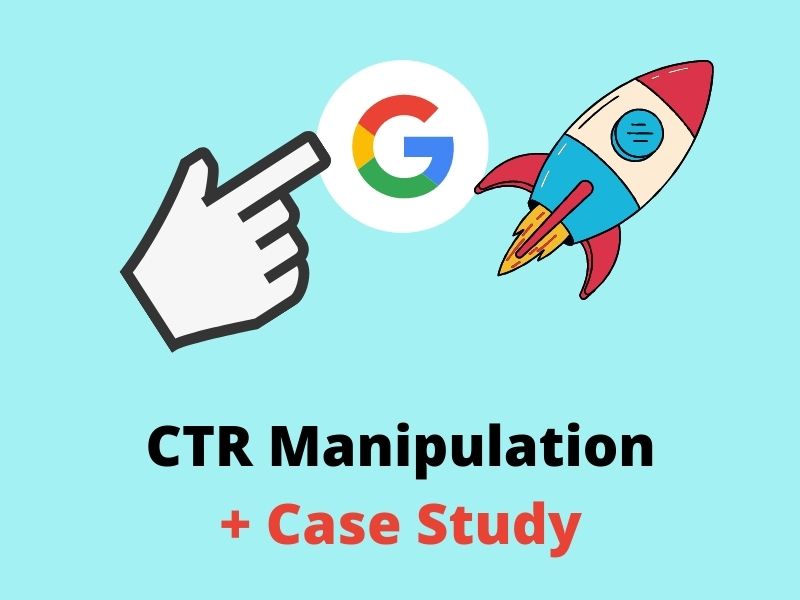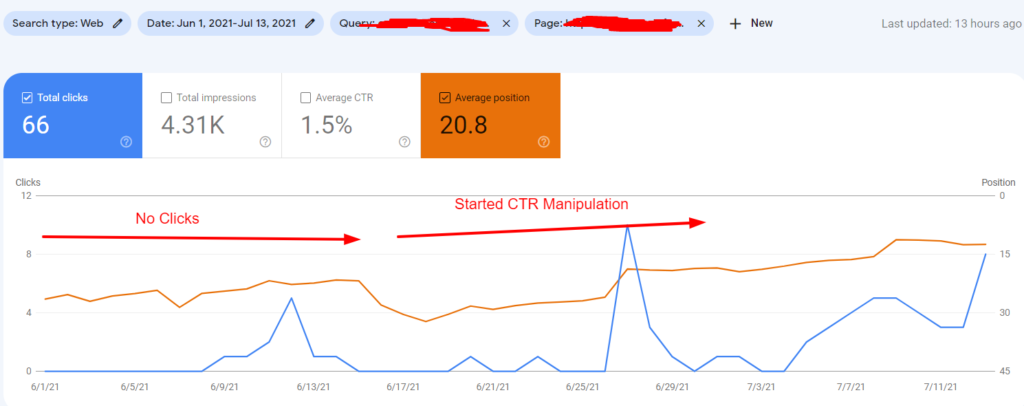CTR Manipulation Press Release: Unlock Higher CTR for Better Search Engine Optimization Outcomes
CTR Manipulation Press Release: Unlock Higher CTR for Better Search Engine Optimization Outcomes
Blog Article
CTR Control: A Proven Method for Better Clicks
The idea of click-through price (CTR) control has gathered attention as a calculated approach to improving electronic marketing outcomes. As we discover the complexities of reliable CTR techniques, one must consider: how can marketing professionals stabilize the quest of higher clicks with the critical of maintaining depend on and trustworthiness in their brand name?
Recognizing CTR Control
Although click-through rate (CTR) manipulation can be a controversial subject, comprehending its mechanisms is necessary for digital marketing experts and platform managers alike. CTR is the proportion of individuals who click a specific web link to the overall variety of customers that see a page, email, or promotion . A raised CTR indicates efficient material, while a reduced CTR may recommend that renovations are needed.
Adjustment of CTR can take place with various ways, such as changing advertisement positionings, optimizing headlines, or changing call-to-action language. These methods can skew the regarded effectiveness of projects, bring about potential misconceptions of customer engagement and habits.
In addition, CTR manipulation can affect algorithm-driven systems, as these systems frequently focus on web content based upon engagement metrics. As a result, pumped up CTRs can mislead online marketers right into thinking that their strategies are yielding favorable outcomes, possibly wasting resources on inefficient projects.

Strategies for Efficient Control

One more strategy includes utilizing distinctive visuals. Integrating top quality images or video clips can attract users in, making them more probable to involve with the material. In addition, utilizing A/B screening enables marketers to explore different variants of advertisement images, calls-to-action, and copy to establish which resonates ideal with the target audience.

Ethical Factors To Consider in CTR Approaches
As marketing experts discover numerous techniques to enhance click-through rates (CTR), it is critical to consider the honest ramifications of these methods. Honest advertising techniques focus on transparency, sincerity, and regard for the target market, making certain that customers are not misled by misleading methods that might produce temporary gains however eventually damage brand name credibility.
One major moral problem emerges from the use of clickbait headlines, which promise marvelous material but provide minimal value. Such methods can deteriorate depend on between customers and brand names, bring about stress and disillusionment. In addition, using misleading images or manipulating data to create an incorrect narrative can misstate the actual advantages of a services or product, elevating questions regarding integrity.
Customizing material based on customer data can enhance engagement, but it needs to be done with customer authorization and understanding. Striking a balance between efficient CTR approaches and ethical factors to consider is vital for promoting long-lasting connections with consumers.
Gauging the Influence of Adjustments
Gauging the influence of changes in click-through rates (CTR) is critical for examining the performance of advertising and marketing methods. Accurate dimension enables marketers to identify whether particular modifications yield positive outcomes. To effectively assess these adjustments, it is important to develop standard metrics before applying modifications. This includes collecting data on CTR, conversion prices, and other pertinent performance signs.
When changes are made, marketers should use A/B screening to compare the performance of various methods. This approach permits a controlled setting where one variable is changed while others continue to be constant, enabling a clearer understanding of the adjustments' impact on CTR. Additionally, segmenting information by target market demographics or networks can provide understandings right into which sections respond favorably to certain manipulations.
Routine analysis of these metrics post-implementation is essential to track progress and recognize trends. Using tools such as Google Analytics and warmth maps can enhance this analysis, giving an extensive view of user habits. By consistently gauging the impact of adjustments, services can make informed choices, enhancing their advertising efforts for enhanced interaction and ultimately driving better performance across projects.
Long-Term Perks of CTR Manipulation
The long-term advantages of click-through rate (CTR) control expand beyond immediate engagement metrics, cultivating continual development and boosted brand presence. By strategically enhancing CTR, business can grow a faithful target market base, as greater engagement typically translates to enhanced depend on and integrity. This trust can promote customer retention, eventually resulting in higher conversion prices with time.
Furthermore, improved CTR signals to online search engine and social platforms that web content is important and relevant, which can improve organic reach. As algorithms focus on high-performing material, brand names that regularly achieve raised CTRs are more probable to take advantage of increased exposure in search results and suggested feeds.
In the context of electronic advertising, a greater CTR can also result in lower customer procurement costs. As projects end up being extra effective, organizations can allocate resources much more effectively, making the most of roi.
Conclusion
In conclusion, CTR adjustment represents an important approach for improving click-through prices via different techniques such as optimized headings and individualized material. While the possibility for increased interaction is substantial, honest factors to consider should lead these methods to make sure depend on and credibility are maintained. By methodically gauging the influence of changes and concentrating on long-term benefits, organizations can effectively take advantage of CTR manipulation to foster sustained customer loyalty and assist in brand development in a progressively affordable digital landscape.
The principle of click-through CTR Manipulation Service rate (CTR) manipulation has actually garnered attention as a critical strategy to enhancing digital marketing results.Although click-through rate (CTR) control can be a controversial subject, recognizing its systems is necessary for electronic marketing professionals and platform administrators alike. An elevated CTR suggests effective content, while a reduced CTR may recommend that renovations are essential.
Using tactical techniques for efficient CTR adjustment can significantly improve user interaction and campaign efficiency.In conclusion, CTR manipulation stands for an important technique for enhancing click-through rates via different strategies such as maximized headings and personalized content.
Report this page